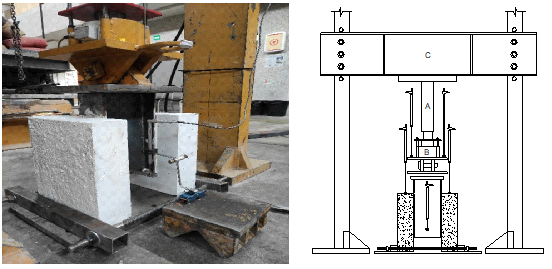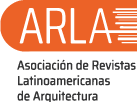Comparison of behavior between angle shear connectors with different thickness under monotonic and cyclic loadings
DOI:
https://doi.org/10.13140/RG.2.2.18659.27684Keywords:
cut connectors, angle connector, Push-Out test, loads monotonic, cyclic loadsAbstract
The angle type steel connectors allow the transfer of shear effects in composite structural systems, specifically in the interaction between metal beams and reinforced concrete slabs. Studying the mechanical behavior of this type of connectors is essential due to its wide use and diffusion in construction and its low cost and easy installation on site. This article presents an experimental analysis on 16 specimens tested using the Push-Out method described by Eurocode 4, comparing 4 and 6 mm thick angular connectors arranged in 2 different positions each, exposed to monotonic and cyclic loads. The typical failure of the connectors was fracture of the base material above the weld bead. The failure in the concrete caused by the Type 2 connectors was by crushing the slabs showing noticeable cracks in relation to the Type 1 connectors that generated small cracks. Specimens with 6 mm Type 1 connectors failed due to detachment between the connectors and the slabs. Type 2 connectors were the most ductile than Type 1 connectors. The results indicate that Type 2 connectors obtained better performance in terms of ultimate shear capacity, ductility and degradation of shear stiffness. Type 1 connectors showed inferior mechanical capabilities. Finally, the experimental results were evaluated with the theoretical equations proposed by constructive codes and similar investigations
Downloads
References
J.G. Ollgaard, R.G. Slutter, y JW. Fisher, “Shear strength of stud connectors in lightweight and normalweight concrete” Eng J Amer Inst Steel Constr, vol. 8, no. 2, pp. 55–64, 1971
J. C. Vianna, L. F. Costa-Neves, P. C. G. da, y S. A. L. de Andrade, “Experimental assessment of Perfobond and T-Perfobond shear connectors’ structural response” J. Constr. Steel Res., vol. 65, no. 2, pp. 408–421, 2009, doi: 10.1016/j.jcsr.2008.02.011
G.S. Veríssimo y J.L.R. Paes, “Design and experimental analysis of a new shear connector for steel and concrete composite structures” Int. Assoc. Bridg. Maint. Saf., vol. 53, no. 9, pp. 1689–1699, 2010
D. Ayala y C. Chicaiza, «Análisis de la influencia de los conectores de corte en la unión viga metálica y losas de hormigón armado” Tesis de grado. Escuela Politécnica Nacional, Ecuador, 2021
S. Choi, K. Tateishi, D. Uchida, K. Asano, y K. Kobayashi, “Fatigue Strength of Angle Shape Shear Connector used in Steel-Concrete Composite Slab” Steel Struct. 8, vol. 8, pp. 199–204, 2008
EN, “Eurocode 4: Design of composite steel and concrete structures”, London, United Kingdom 2011
M. Shariati, N. H. R. Sulong, M. Suhatril, A. Shariati, M. M. A. Khanouki, y H. Sinaei, “Comparison of behaviour between channel and angle shear connectors under monotonic and fully reversed cyclic loading” Constr. Build. Mater., vol. 38, pp. 582–593, 2013, doi: 10.1016/j.conbuildmat.2012.07.050.
A. Shariati, M. Shariati, N. H. R. Sulong, M. Suhatril, y M. M. A. Khanouki, “Experimental assessment of angle shear connectors under monotonic and fully reversed cyclic loading in high strength concrete” Constr. Build. Mater., vol. 52, pp. 276–283, 2014, doi: 10.1016/j.conbuildmat.2013.11.036
R. Balasubramanian y B. Rajaram, “Study on Behaviour of Angle Shear Connector in Steel-concrete Composite Structures” Steel Struct. 16, vol. 16, no. 3, pp. 807–811, 2016, doi: 10.1007/s13296-015-0094-0
W. Deng, Y. Xiong, D. Liu, & J. Zhang, “Static and fatigue behavior of shear connectors for a steel-concrete composite girder” J. Constr. Steel Res., vol. 159, pp. 134–146, Aug. 2019, doi: 10.1016/j.jcsr.2019.04.031
ANSI/AISC 360-16, An American National Standard ANSI/AISC, “Specification for Structural Steel Buildings” 2016
National Building Code of Canada, “National Building Code of Canada” vol. 1, 2015
M. Yamada y O. Kiyomiya, “Experimental study on the loading capacity of L shape and headed stud shear connectors for composite structures” Port Harb. Res. Inst. Minist. Transp. Japan, 1986
R. Soty y H. Shima, “Formulation for shear force-relative displacement relationship of L-shape shear connector in steel-concrete composite structures” Eng. Struct., vol. 46, pp. 581–592, 2013, doi: 10.1016/j.engstruct.2012.09.003
C. E. de N. CEN, “Norma Española UNE ENV 1994-1-1, “ 1995
American Concrete Institute ACI-318-14, “Requisitos de Reglamento para Concreto Estructural” 2014
American Society for Testing and Materials ASTM, “Standard Performance Specification for Hydraulic Cement ASTM C1157” 2016. doi: 10.1520/C1157
American Society for Testing and Materials ASTM, “Standard Test Method for Compressive Strength of Cylindrical Concrete Specimens ASTM C39M” 2015. doi: 10.1520/C0039
American Society for Testing and Materials ASTM, “Standard Practice for Making and Curing Concrete Test Specimens in the Field ASTM C31M” 2016. doi: 10.1520/C0031
M. J. Acevedo, “Ensayo de tracción de probetas metálicas” ResearchGate, no. February, 2019
American Society for Testing and Materials ASTM, “Standard Test Method for Static Modulus of Elasticity and Poisson’s Ratio of Concrete ASTM469M” 2014. doi: 10.1520/C0469

Published
How to Cite
Issue
Section
Copyright (c) 2021 Diego Ayala, Carlos Chicaiza, Luis Hernández, Gabriel Velástegui, Raúl Baquero

This work is licensed under a Creative Commons Attribution-NonCommercial-ShareAlike 4.0 International License.
The opinions expressed by the authors do not necessarily reflect the position of the editor of the publication or UCLA. The total or partial reproduction of the texts published here is authorized, provided that the complete source and electronic address of this journal is cited. Authors have the right to use their articles for any purpose as long as it is done nonprofit. The authors can post on the internet or any other media the final approved version of their work.






.png)




